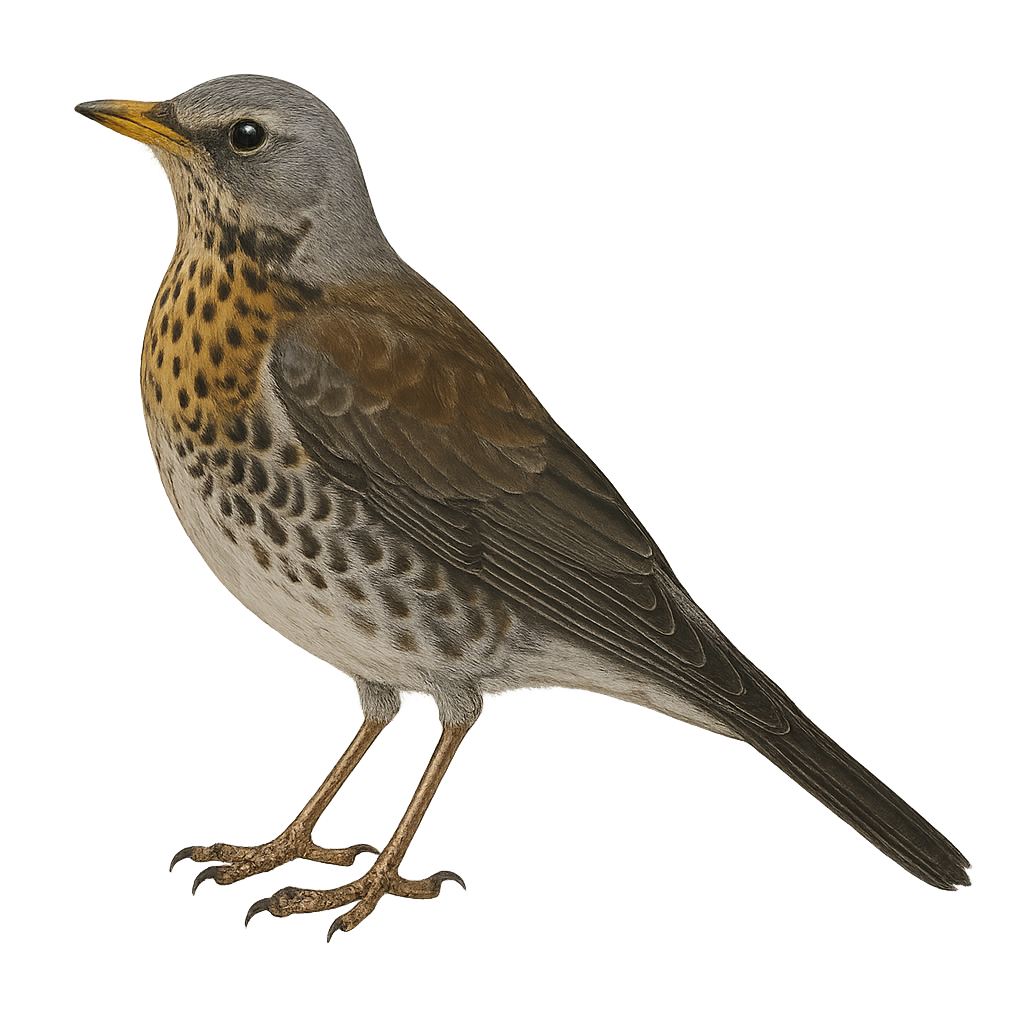Your wildlife photography guide.
Explore the fieldfare in detail, study its behavior, prepare your shots.
Where to observe and photograph the fieldfare in the wild
Learn where and when to spot the fieldfare in the wild, how to identify the species based on distinctive features, and what natural environments it inhabits. The WildlifePhotographer app offers tailored photography tips that reflect the fieldfare’s behavior, helping you capture better wildlife images. Explore the full species profile for key information including description, habitat, active periods, and approach techniques.
Fieldfare
Scientific name: Turdus pilaris

IUCN Status: Least Concern
Family: TURDIDAE
Group: Birds
Sensitivity to human approach: Suspicious
Minimum approach distance: 10 m
Courtship display: April to June
Incubation: 10-14 jours
Hatchings: April to June
Habitat:
Meadows, orchards, open forests
Activity period :
Primarily active during the day, with peak activity in the morning and late afternoon.
Identification and description:
The fieldfare, Turdus pilaris, is a medium-sized bird belonging to the Turdidae family. It is characterized by its grey head and rump, contrasting with a brown back and a white belly speckled with black. This bird is often seen in flocks, especially in winter, when it migrates south to escape the cold. The fieldfare primarily feeds on berries, fruits, and insects, which it finds in meadows, orchards, and open forests. It is known for its melodious song and loud alarm calls when threatened. During the breeding season, it builds its nest in trees, often in loose colonies, and vigorously defends its territory against predators.
Recommended lens:
400 mm – adjust based on distance, desired framing (portrait or habitat), and approach conditions.
Photography tips:
To photograph the fieldfare, it is advisable to use a telephoto lens of 400mm or more to capture detailed images without disturbing the bird. Look for areas where fieldfares gather, such as orchards or meadows, especially in winter. Be patient and discreet to avoid scaring them away. The best times to observe them are early in the morning or late in the afternoon when the light is soft and flattering. Remember to check the weather, as an overcast sky can provide ideal diffused light for bird photography.
The WildlifePhotographer App is coming soon!
Be the first to explore the best nature spots, track rutting seasons, log your observations, and observe more wildlife.
Already 1 431 wildlife lovers subscribed worldwide

